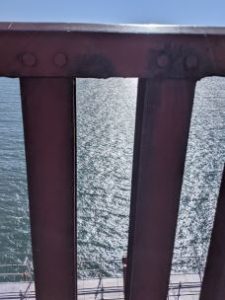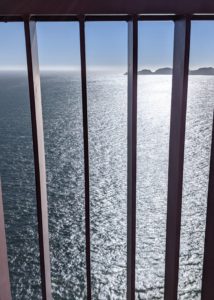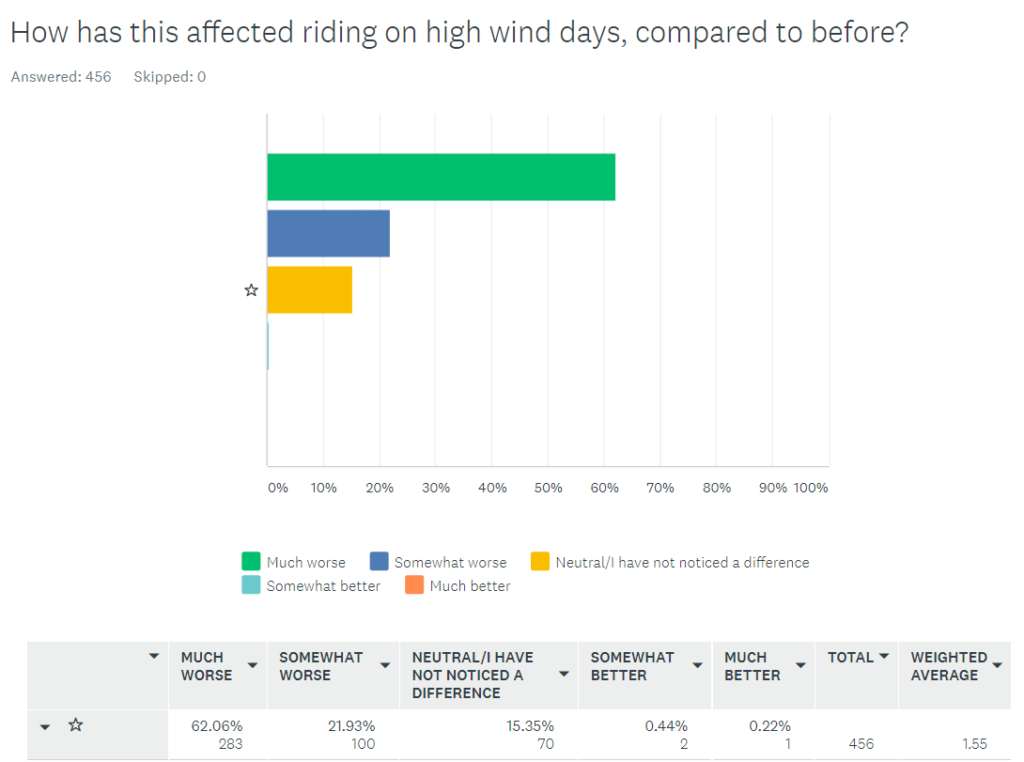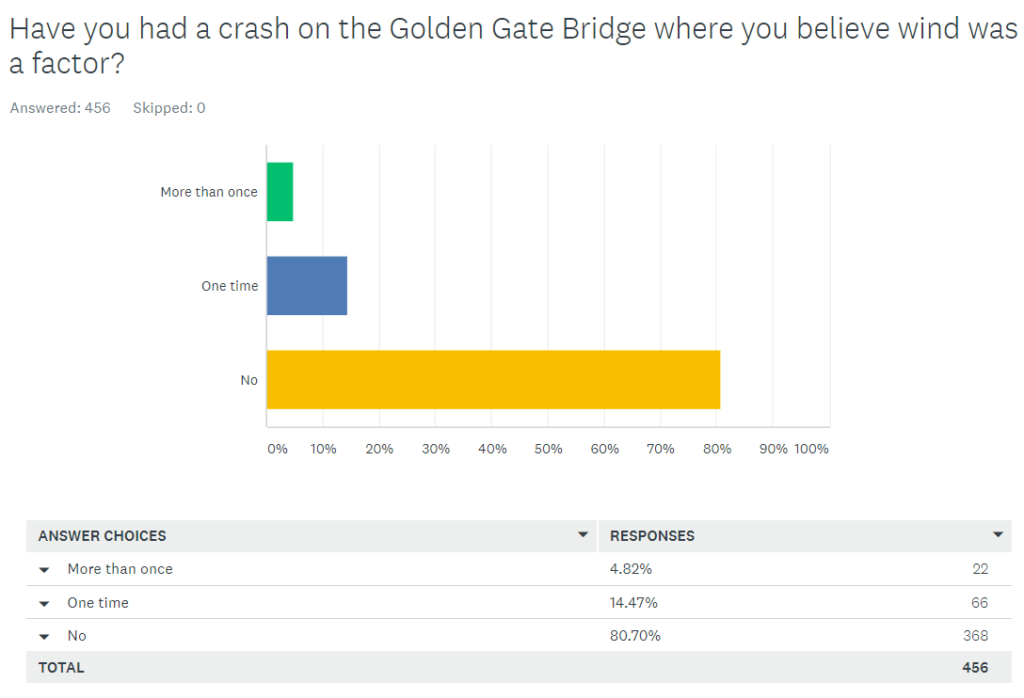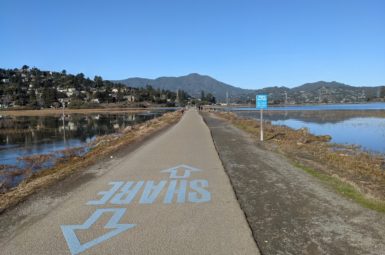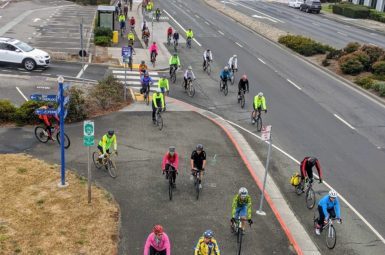News Survey Results: New Railing on Golden Gate Bridge Makes for Windier Ride
The Golden Gate Bridge is far and away the busiest crossing for bicycles in the Bay, and one of the most-ridden bridges in the nation. Despite its unquestionable importance as a bicycle and pedestrian link, the bridge’s two sidewalks have many competing uses (note that “sidewalk” is the official term, though it is somewhat confusing as pedestrians are not permitted on the West Sidewalk). The east side is shared between pedestrians and riders on weekdays, and bike traffic on the bridge is a made up of a mix of tourists on Blazing Saddles hybrids, commuters traveling between San Francisco and Marin, MTBers with wide-bar hardtails riding to the Headlands, and road bikers doing the Paradise Loop. This makes for a busy path.
This might all work if riders had the full sidewalk to work with. However, ongoing maintenance on the bridge requires that materials and tools be stored along the bridge railing on the West Sidewalk, narrowing the pathway width to 5’ in some places, barely wide enough for two bikes to pass one another. Additionally, construction of the suicide deterrent system is currently constraining the East Sidewalk as well.
Despite these already challenging conditions, a new factor has been added to the mix: increased wind. Recently, the west side of the bridge seems to have gotten worse to ride on high wind days and MCBC has fielded a steady stream of complaints following the recent installation of the new bridge railing.
Background
In the mid-2000s, the Golden Gate Bridge District initiated a project to deter suicides. Being an iconic structure, the bridge is the site of a truly tragic number of suicides, close to two dozen a year. Several options were studied, including adding a new railing on top of the existing railing, replacing the existing railing entirely, or adding a net below the level of the bridge. This last option was selected.
Wind retrofit
At the same time, the Bridge District determined that the bridge needed to be retrofitted to withstand a high wind event. Interestingly enough, bridges can collapse from wind alone, as was the case with the Tacoma Narrows Bridge in 1940. While the wind retrofit was necessary in its own right, the additional wind load of the suicide deterrent system (SDS) added to the need. To make the bridge more aerodynamic, some part of the bridge had to make up for the increased wind load.
This was done by changing out the railing “pickets” (the vertical slats that run between the railing and deck) from 4”-wide H-beams to ¼”- slats. By greatly reducing the lateral surface area of the bridge, wind forces on the bridge would also be reduced. However, the wind doesn’t simply go away – by design the wind is now funneled onto the West Sidewalk, which also happens to be the bikes-only route on afternoons and weekends.
- Golden Gate Bridge H (old) slats
- Golden Gate Bridge 1/4” (new) slats
What we’ve heard
Since the picket replacement began, we started hearing from our members that the bridge was much more difficult to cross on windy days. Being a regular rider of the bridge myself, I first experienced a high wind day in early June. Despite being an experienced rider and weighing 175 lbs, I was barely able to hold the bike straight going 8 mph when riding past the new pickets. As soon as I passed the southern tower and began riding next to the old pickets, the wind, while obviously noticeable, was no longer threatening to knock me into the path of an oncoming rider.
Wind measurements
The increase in wind is not merely anecdotal – it can be measured. An MCBC member used an anemometer to measure the pickets’ effect on wind speed. Indeed, he found that on the northbound side of the West Sidewalk (i.e. near the railing separating bikes from cars), the wind adjacent to the new pickets is 2-3 times as strong adjacent to the new pickets compared to the legacy pickets.
Keep in mind that this represents a success of the project – the new railing was designed to allow more wind through the bridge, and thus onto the bike path. However, anyone who has ever ridden a bike knows that a 10-mph crosswind pales in comparison to one blowing at 20 or 30 mph.
Public survey
On June 14th, MCBC published a survey, asking members and those in the biking community to provide input about their experience riding over the bridge. Over 450 individuals responded, indicating overwhelmingly that they felt the bridge was far less comfortable to ride after the installation of the new pickets. While the railing does not appear to be a problem on low wind days, 84% of respondents indicated that things had gotten worse, with 62% saying it was “much worse” than before.
Respondents were predominantly experienced riders, with the majority crossing the bridge by bike on at least a weekly basis and three-quarters having crossed in the last month. This makes them (1) the people most likely to recognize a problem, and (2) least likely to be affected by it, given their experience riding. This is important to note, considering the great number of tourists on rental bikes who use the bridge, many of whom may be much less steady on a bike.
The full results of the survey may be found here.
Rider testimonials
One outcome of our survey was a finding that the Bridge District is vastly under-reporting the number of bicycle crashes on the bridge. Of the 450 people who responded to our survey, 88 (nearly 20%) reported experiencing a crash on the bridge where wind was a factor. Fifty-nine respondents to our survey reported crashes on the bridge this year alone, more than the 54 crashes that the Bridge Districts reported in the entire period of 2019-2020. And while six of the crashes in our survey were severe enough that the rider required medical attention, only one(!) was reported to the Bridge District. This all suggests that the crashes reported by the bridge are merely the tip of the iceberg.
Several respondents shared their stories of their wind-related crashes on the bridge. While the survey did not ask peoples’ gender or weight, a common issue was that women and smaller riders appear to suffer disproportionately from the effects of the change.
My office is in Sausalito and my home is in San Francisco. A few weeks ago I was cycling home and the wind was so bad on the bridge that I had to get off my bike at the midpoint of the bridge and walk the rest of the way. I have cycled the bridge thousands of times and had never had to do that before…I weigh 97 pounds and could feel my bike tilting over from the wind. Since then I will only ride on the bridge if there is no wind forecast.
F.P., San Francisco
While biking on a moderately windy day in May (2021), a sudden gust of wind thrust my bike into the railing and I scratched my hand on the metal. I got off my bike to walk the rest of the way, but as a lightweight person, it was tricky to keep my balance…For the duration of getting across the middle of the bridge I had to keep one hand on my bike and just pray I wouldn’t fall over.
D.B., San Francisco
I was riding on the west side of the bridge around 2:00pm. The wind was so bad that my bike was being pushed to the east side of the walkway. When I passed [the Marin Tower] the wind hit me so hard that it blew my wheel out from under me. I went down straight on my shoulder and people coming the opposite direction had to swerve to miss me which also made them crash into the side walls. The wind situation has really sucked the fun out of riding across the bridge… It’s scary… I can’t even imagine what it would be like to try to navigate as someone who is not experienced on bikes.
Maddie Hines, San Francisco
On May 1st (2021), I was traveling southbound into SF and it was a very high wind day. All bikes were leaning while riding across the bridge, the noise from the new barrier was deafening, and heads were shaking side-to-side. I was pushed off my bike at the southern tower because the wind was so brutal. The wind was so bad I could barely get back on my bike… I’ve crossed the bridge 3-4 times per week for the last 10+ years and have never experienced wind so bad.
Cinzia Bianchi, San Francisco
What can be done
We believe that we have demonstrated that the new bridge railing has made biking on the bridge on windy days significantly more difficult. Due to the high volume of bike traffic and limited space to ride, this will, in all likelihood, result in more crashes and more injuries.
Let us state in no uncertain terms that we, as residents of the Bay Area, never want to put the Golden Gate Bridge in any danger. Additionally, we wholeheartedly support efforts that will deter suicide attempts from the bridge, a tragedy that has afflicted far too many.
However, it is unacceptable that this project ultimately discourages people from riding a bicycle across the Golden Gate Bridge and endangers those that do so. In a time of climate crisis, the stewards of our transportation infrastructure need to be planning for vastly more low- and zero-GHG trips, which means making those trips more convenient and safer. By all appearances, this project does the opposite, making trips by bicycle more difficult and more dangerous.
We ask that the Bridge District commit to the following measures:
-
Conduct their own study on the amount of additional wind on the West Sidewalk
-
Attempt to address the issue as part of the harmonic retrofit
-
Improve bridge crash reporting
-
If the Bridge District is confident that the new pickets do not affect the riding experience, they should show their work. And if they accept that the new pickets do affect riding, as we believe is the case, how much more wind should riders expect?
-
The San Francisco Chronicle has reported that the Bridge District is undertaking an effort to quiet the “howl” created by the new pickets. If there are mitigations that could be undertaken to reduce impacts to riders, they should be studied as part of this effort.
-
To properly diagnose a problem, you must first measure it. And as our survey makes clear, the Bridge District is undercounting the number of people crashing on the bridge, and not merely minor solo crashes. The Bridge District is currently undertaking a safety study (see the draft here) – we ask that the study recommend proactively soliciting data from people who have crashed on the bridge in order to determine the real rate of injury crashes. Additionally, we request an easier way to self-report crashes. This could take the form of signs posted on the bridge railing informing riders to text a number if they are involved in a crash and would then be prompted to report the location and direction of travel.
Fundamentally, bicycle users are a key constituency and stakeholder of the Golden Gate Bridge. It stretches the bounds of credulity to imagine that the Bridge District would undertake a change that would so significantly impede and endanger motorists. We merely ask for the same consideration to be taken for those using non-motorized transportation on the bridge.
What’s next
The Bridge District Board of Directors is having its monthly meeting on Friday, June 25th at 10 AM. MCBC has submitted a letter (which you can find here) summarizing the issues described above and listing our requests.
If you want to share your own story during the meeting of how the new bridge railing has affected your ride, you can call in at (415) 569-6446 and give your comment during the open time (Item 4 on the agenda). You can also submit a written comment to districtsecretary@goldengate.org.
If you would like additional information about how to do this, please contact warren@www.marinbike.org ahead of time.
sign-up for advocacy alerts
We will need your help winning these improvements! Please sign-up for advocacy alerts using the form below and we’ll tell you when/how to support our efforts.
members make it happen
We’re working to make Marin more bike-friendly for people of all ages and abilities. Are you with us?
